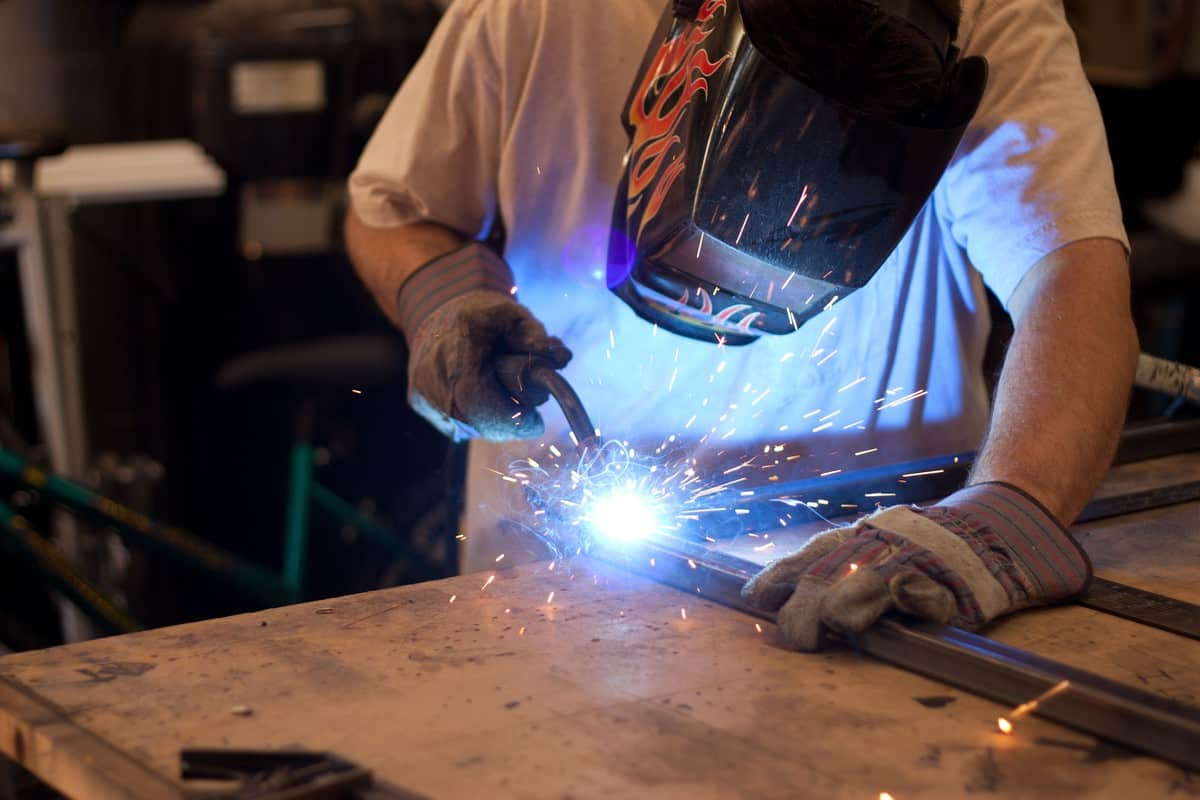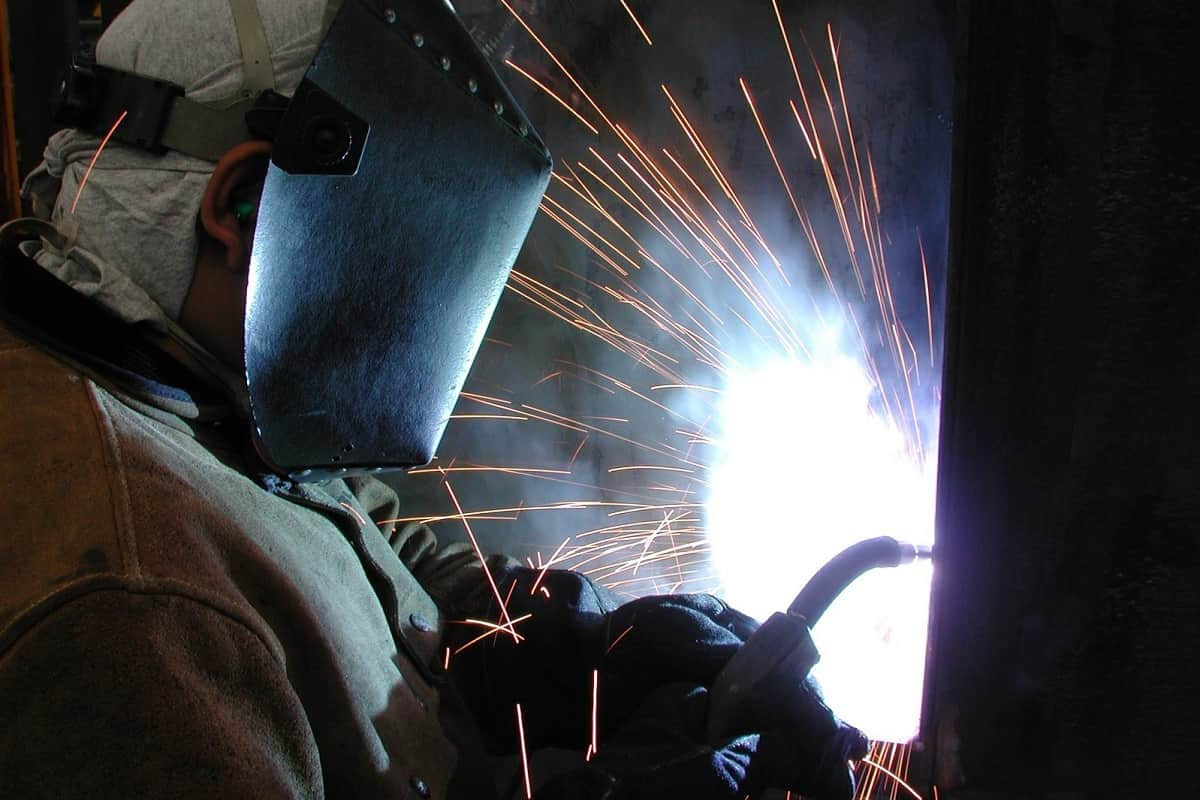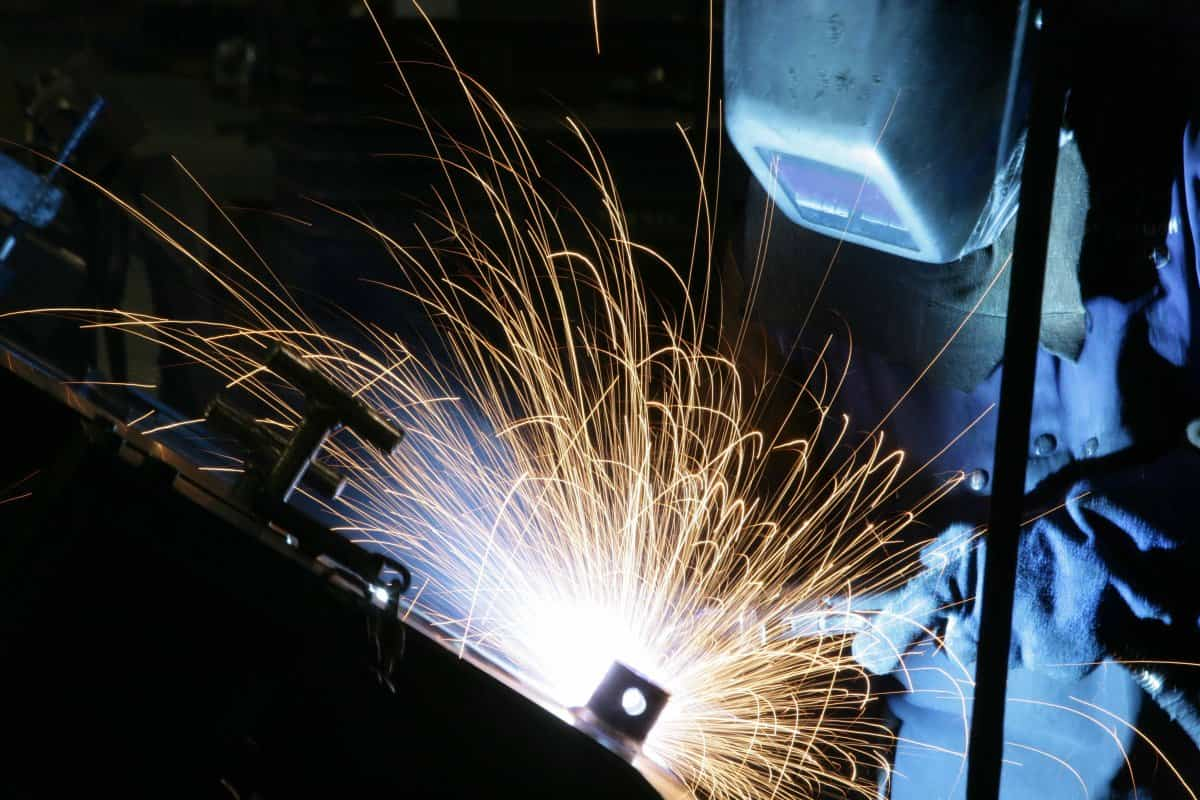One of the most using tools in the industry is a welding electrode rod. If anyone has an application related to electrodes and their uses, should know about types of electrodes. Welding is a process used in the manufacturing industry that joins two or more parts together using heat, pressure, or both to create a bond after the parts cool. Arc welding is a technique that joins two pieces of metal by first melting them with an electric arc. To melt the metals at the point of contact, an arc is created between an electrode (which can be either consumable or non-consumable) and the base metal. In most cases, the welding area is shielded from the environment by a shielding gas, vapor, or slag. This is because the air in the atmosphere can cause oxidation in the weld pool by interacting with it. This electric arc can generate temperatures of up to 6300 degrees Fahrenheit (3500 degrees Celsius), which is high enough to melt metals like carbon steel. Another type of welding that uses an electric arc to create welds is MIG welding, which stands for metal inert gas welding. MIG, on the other hand, uses a continuously running solid wire electrode that is heated before being fed into the weld pool via a welding gun. The connection between the two basic components is created by fusing. The molten electrode used in MIG welding makes it easier to join the two metals to be welded. This makes MIG welding perfect for bringing two different types of metal together. Shielding gas is also supplied through the welding gun to ensure that the weld pool does not interact with the surrounding air which would oxidize the weld area. Electrodes, also known as welding rods, can come in a few different varieties depending on the intended function.
- Low hydrogen carbon steel electrode
- Electrode made of mild steel
- Mild steel electrode (non-ISI quality)
- Electrode made of stainless steel

4 types of welding electrodes
The Welding rods or electrodes have 4 different types of them according to their uses. Inert gas arc welding (SMAW), also known as rod welding, uses a welding rod. The welding rod may also be referred to as a welding electrode. The welding rod is a metal rod with mineral and metal powder coating. The rod has two purposes: to supply filler metal to the workpiece and to conduct electrical current to the arc. Two types of welding rods are used in industry: First, Consumable Electrodes Consumable electrodes or welding rods perform as expected. When using filler electrodes to weld, the rods melt and are consumed to bridge the space between the parent metal and the other metal part. Stick electrodes, solid wires, and flux-cored wires are used in GMAW, MIG, FCAW, and Electroslag welding (ESW). Non-consumable Electrode A non-consumable electrode doesn't alter characteristics or melt. An electrode is used to create and maintain an electric arc. Non-consumable electrodes are made of materials with higher melting points, like tungsten, graphite, and carbon. The non-consumable rods can oxidize or vaporize over time. You must manually feed fillers while using a non-consumable electrode. Non-consumable electrode uses include Tungsten Inert Gas (TIG), Carbon Arc, and Atomic Hydrogen Welding (AHW). Four types of welding rods exist: LHC steel electrode We supply high-quality Low Hydrogen carbon steel electrodes made with appropriate parameters. These welding rods offer good weld beads, are perfect for welding and cutting thicker materials, and have easy generation and retention over the arc. These electrodes connect carbon and low-alloy steels well. Electrode Mild Steel Mild steel electrodes with low carbon steel deposits are one of our best-selling items. They have the tensile strength to support a long arc and are utilized in shipbuilding, rail carriages, pipelines, and the auto sector. Electrode Mild Steel (Non-ISI grade) Non-ISI grade Mild Steel Electrode guarantees little spill and smoke emission during welding. This value-pack comprises 90 non-ISI mild steel welding rods. Electrode steel Top-selling TATA-approved stainless-steel electrodes deliver consistent weld quality regardless of temperature and weather. Grab your greatest TATA Agrico welding electrodes to make excellent, durable project works. 
Welding rods chart
Like any other industrial good and commodities, welding rods have organized chart and classification. The welding industry has adopted a series of classification numbers from the American Welding Society for welding stick electrodes. The system for identifying electrodes for arc welding has the following structure: E - Indicates an electrode for arc welding. The first two (or three) digits are the tensile strength (resistance of the material to the forces trying to break it) in thousands of pounds per square inch of the weld metal. The third (or fourth) digit indicates the place of welding. 0 indicates no classification is used; 1 for all positions; 2 only for flat and horizontal positions; 3 for flat positions only. The fourth digit - indicates the type of electrode coating and the type of power source used; AC or DC power, straight or reverse polarity. The coating type, welding current, and polarity position identified by the fourth electrode classification identifier are listed in Table 5-4. Type of coating, current, and polarity, determined by the fourth digit in the classification number of the electrode: Number coating weld currents 1 Cellulose Potassium AC, DCRP, DCSP 2 Sodium titanium dioxide AC, DCSP 3 potassium titanium dioxide AC, DCSP, DCRP 4 titanium iron powder AC, DCSP, DCRP 5 low hydrogen sodium DCRP 6 Low Hydrogen Potassium AC, DCRP 7 Iron powder Iron oxide AC, DCSP 8 Low hydrogen iron powder AC, DCRP, DCSP The electrode identification system for stainless steel arc welding has the following structure: E stands for arc welding electrode. The first three digits indicate the stainless steel type of American iron and steel. The last two digits indicate the current and used state. The E-308-16 number in this system refers to Institute Type 308 stainless steel; used in all positions; Direct current with alternating or reverse polarity. 
Welding rod material
It is important to know the material of a welding electrode or rod, especially for the people that are working in this profession. Welding rods often use multi-material alloys. According to Welding Technology Machine's online welding information source, the three most common welding rods allow you to join or form various steel alloys: copper-plated mild steel alloys, high-carbon steel alloys, and 3% nickel steel alloys. There is an extensive list of materials used in the manufacture of steel welding rods, as well as rods for aluminum, copper, and various other metals and alloys. Copper plated mild steel alloy In welding machine technology, copper-plated mild steel alloys are among the most popular types of welding wire. Copper-coated mild steel welding rods are commonly used for welding mild steel, low carbon steel, and wrought iron. Mild steel, the most common steel, costs comparatively less in the steel world; Because of this, mild steel is used more than any other type of steel. Copper coatings prevent rust and corrosion that unprotected mild steel must be protected from. Carbon steel alloy Carbon steel welding rods are the second most common welding rods according to welding machine technology. According to welding consumables suppliers, flux plays an important role in most welding processes. High carbon steel often forms or repairs cutting edges, and many bicycle manufacturers make frames from welded high carbon steel. High carbon steels also often form springs for a wide variety of applications. 3% nickel steel alloy Steel, usually composed of iron and carbon, is often hardened by the addition of alloying materials such as molybdenum, chromium, or nickel. With the exception of copper-plated mild steel alloy and high carbon steel rods, welders use 3% nickel alloy steel welding rods more often than any other rod, according to Welding Technology Machines. Welding rods made from 3% nickel alloy steel, often used in the automotive industry, produce plated camshafts, shafts, and gears. 3% nickel steel welding rods require flux during welding and melt at 2642 degrees Fahrenheit. Welding electrodes made of this material are resistant to corrosion and do not require copper plating. 
6010 welding rod
One of the welding rods used in industry is 6010. This welding electrode or rod is one of the most known and useful electrodes. The welding electrode or rod is usually referred to as E6010 or E7018. Please note that each number in the name of the electrodes indicates their properties and applications. E simply stands for electrode and comes first in the name of the electrode. The first two digits, 60, represent a tensile strength of 60,000 psi (Inch per square inch). The third "1" indicates that the 6010 electrode is effective in all four welding positions (horizontal, vertical, flat, and overhead). The last digit usually indicates the type of slag and the current type of feed. The 6010 electrode is used for welding low to medium carbon steels and is categorized as a cellulose electrode due to the presence of cellulose in its coating. 6010 electrodes are used in the welding of ship hulls, buildings, bridges, tanks, pipes, and joints, especially in root welds. Of course, welding with this electrode requires great skill. The use of 6010 electrodes larger than 5 mm is prohibited, except in a flat or horizontal position, in corner or corner welding. Finally, professional welders find that 6010 welding wire has good performance. If you are looking for a welding wire that maximizes penetration and leaves the least amount of slag, 6010 welding wire is ideal. 6010 beginner welding wire has very effective properties. Benefits of using 6010 electrodes:
- Stable and extremely strong arc
- excellent penetration
- Its boiling pit is well hydrated and cools down quickly. This fast completion property is ideal for slag welding.
- It is also suitable for welding rusty work pieces.
- Formation of a gas shell to protect the molten metal of the weld pool during the welding process
- Sufficient and uniform weld metal

Welding electrode specification
It is very important to know the specification of a welding rod or electrode before using them. Most fusion welding requires welding wire to create the connection and control its thickness. Welding wire fills gaps in some types of welding. Welding wires are available for ferrous and non-ferrous metals with similar chemical compositions. Welding wires are solid or cored. Welding with wire has advantages and disadvantages, making it suitable for some connections but not others. Next, we'll discuss welding wire's features. Welding wires can reach the weld's root. This allows thin structures to be welded using this method. Deoxidizers in all types of welding wire reduce welding defects like porosity. Deoxidizers reduce cleaning before welding. Solid wire welding has a unique feeding mechanism. Automatic feeders guide wire into the molten pool. This type of welding requires a pro. High-speed weldings use welding wire. A higher welding wire deposition rate speeds up this type of welding. This has helped welding wire gain popularity. To improve welding wire performance and life, a copper growth coating is applied. Misalignment can cause this copper coating to wear. Oxidizrs can improve welding with slags. Deoxidizers can cause welding defects by causing small isolated patches.  There are different types of welding wires for ferrous and non-ferrous metals. Welded wires are used in the automotive, transportation, and equipment manufacturing industries. Three types of welding wires and their uses are described below. CO2 welding wire-1 This welding wire is uniform. With argon or CO2 gas, the CO2 welding wire is used. This welding wire creates uniform welds quickly. The size and alloy of CO2 welding wire depend on the material and structure. 2- Mig-Mag wire This welding wire is unalloyed, low alloyed, stainless steel alloy, and nickel base alloy. An electric arc is used to weld this wire. This method transfers the welding wire to the pool quickly. Welding shielding gas prevents air and metal contamination. 3-Welding powder Similar to Mag welding wire. Powdered welding wire is a tube filled with powder. Some welding wires' sublimated powder protects the weld pool and electric arc.
There are different types of welding wires for ferrous and non-ferrous metals. Welded wires are used in the automotive, transportation, and equipment manufacturing industries. Three types of welding wires and their uses are described below. CO2 welding wire-1 This welding wire is uniform. With argon or CO2 gas, the CO2 welding wire is used. This welding wire creates uniform welds quickly. The size and alloy of CO2 welding wire depend on the material and structure. 2- Mig-Mag wire This welding wire is unalloyed, low alloyed, stainless steel alloy, and nickel base alloy. An electric arc is used to weld this wire. This method transfers the welding wire to the pool quickly. Welding shielding gas prevents air and metal contamination. 3-Welding powder Similar to Mag welding wire. Powdered welding wire is a tube filled with powder. Some welding wires' sublimated powder protects the weld pool and electric arc.

0
0